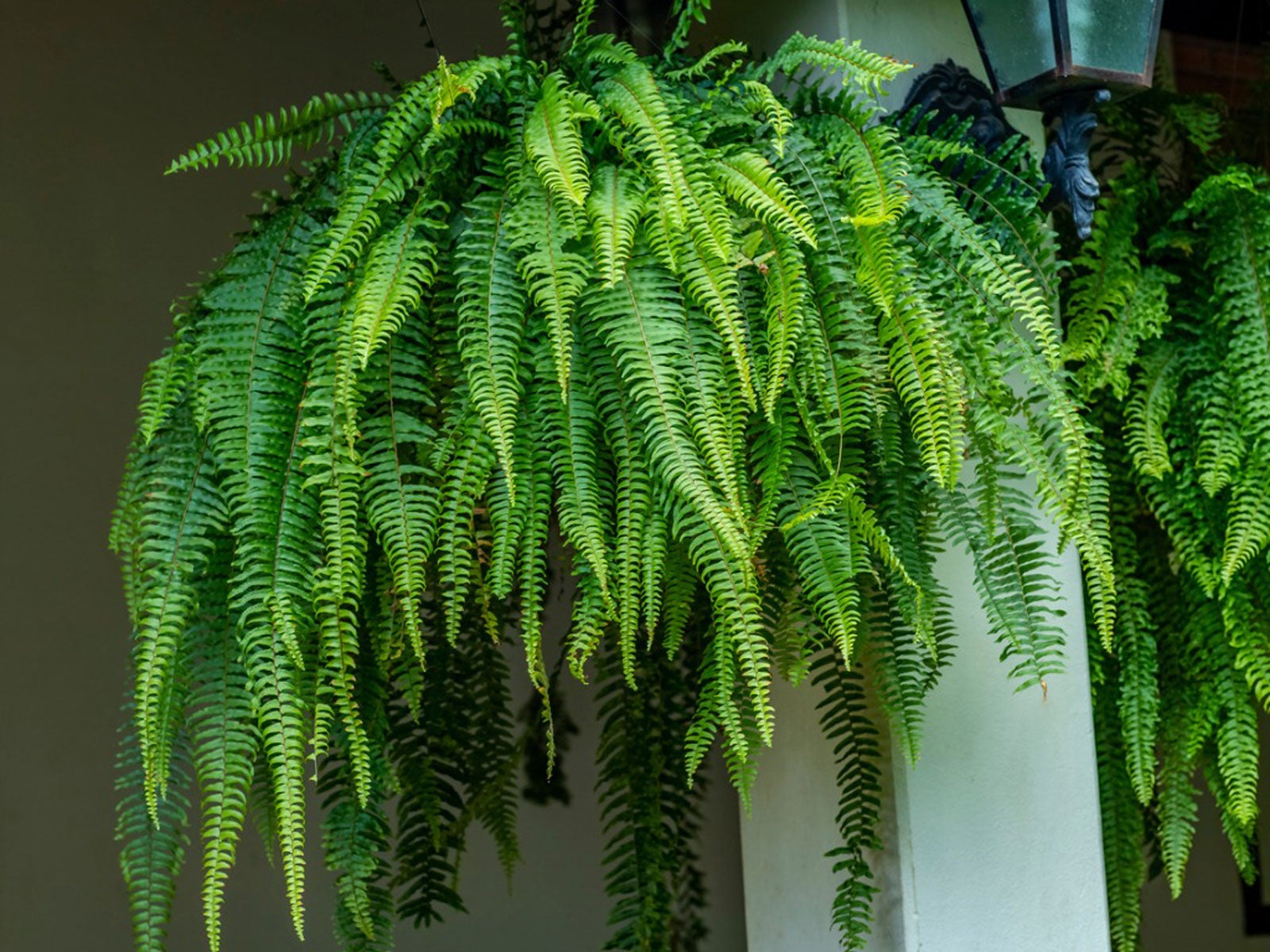Fern In A Hanging Container: Care Of Ferns In Hanging Baskets


Ferns have been a popular indoor plant for decades and ferns in hanging baskets are especially charming. You can also grow ferns in hanging containers outdoors; just be sure to bring them inside before temperatures drop in autumn. Check out the following tips for growing hanging ferns.
Where Do Hanging Ferns Grow Best?
Growing conditions may vary somewhat depending on the type of fern; however, most ferns don’t appreciate intense sunlight. Outdoors, a fern in a hanging container will generally do well with morning sunlight but needs afternoon shade.
Indoor ferns in hanging baskets usually do best in bright, indirect light such as a spot a few feet (1 m.) from a sunny window. Ideal temperatures are between 60 and 70 degrees F. (15-21 C.).
Most ferns appreciate humidity, and the bathroom is an ideal spot for ferns in hanging baskets. Otherwise, increase the humidity in your home with a humidifier or spritz the plant with a fine mist from time to time. Be sure your fern isn’t located too near a drafty door or window, air conditioner, or heating vent.
Tips on Hanging Fern Care
Plant your fern in a container that has a drainage hole in the bottom. Most hanging baskets have some type of drainage to ensure the roots don’t become waterlogged. Fill the container with a peat-based potting mix.
Moisture requirements depend on the type of fern. Some like the potting mix evenly moist, while others do better if the mix dries out slightly before watering. Either way, ensure the soil never becomes bone dry. Ferns in hanging baskets tend to dry out quickly and require more frequent watering, especially during the summer months. Be careful not to overwater during the winter.
Feed a fern in a hanging container every month during spring and summer using a balanced, water-soluble fertilizer mixed to half strength. Never apply fertilizer to dry soil.
Sign up for the Gardening Know How newsletter today and receive a free copy of our e-book "How to Grow Delicious Tomatoes".
Move the fern to a slightly larger container when the plant gets rootbound, usually every couple of years. Your fern may be rootbound if growth appears stunted, the potting mix dries out faster than usual, or water runs straight through the pot. You may also notice roots on the surface of the potting mix or poking through the drainage hole.

A Credentialed Garden Writer, Mary H. Dyer was with Gardening Know How in the very beginning, publishing articles as early as 2007.